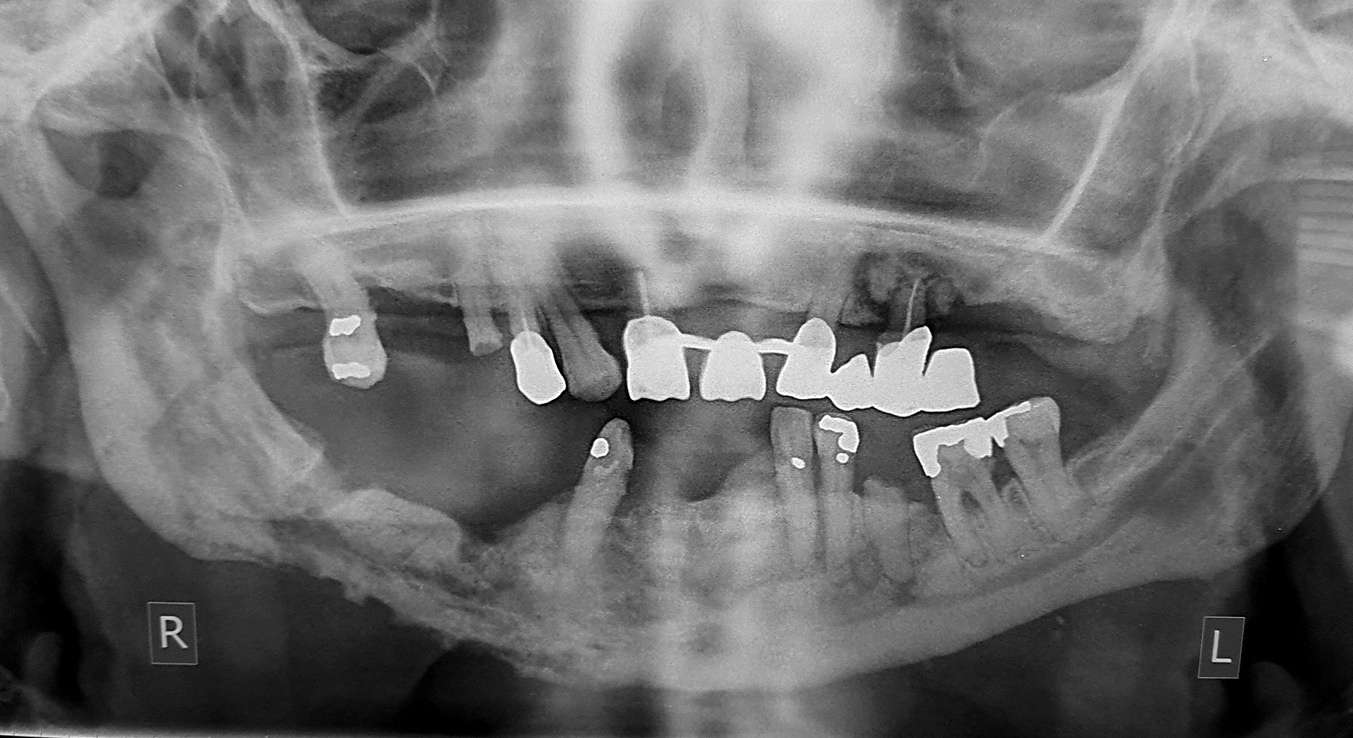Medication-related Osteonecrosis of the Jaws (MRONJ) .
- MRONJ is a serious complication that can arise from the use of medications such as bisphosphonates, denosumab, and certain antiangiogenic or other drugs. It is characterized by necrotic bone that fails to heal after 8 weeks, often following a dental procedure or injury
- MRONJ typically occurs in the mandible, particularly in the posterior regions and less frequently in the maxilla. In some cases the disease may affect both jaws simultaneously.
- The diagnosis of MRONJ is based on the patient’s history (including a record of medication use) and a combination of clinical and radiographic findings. Depending on the stage of the disease, clinical findings may range from the absence of visible inflammation to extensive areas of exposed necrotic bone.
- CT and CBCT are essential imaging modalities for detecting early osseous changes and assessing the extent of bone involvement
- Radiographic features: A diffuse osteolytic lesion with ill-defined and moth-eaten borders leading to cortex perforation is observed. Localized or extensive sclerosis of the bone is often observed, as well as periosteal bone formation. Additionally, within the osteolytic lesions, bone sequestration may be present, creating the appearance of a mixed lesion (radiolucent/radiopaque). In advanced stages, the lesions can penetrate the adjacent anatomical structures.




